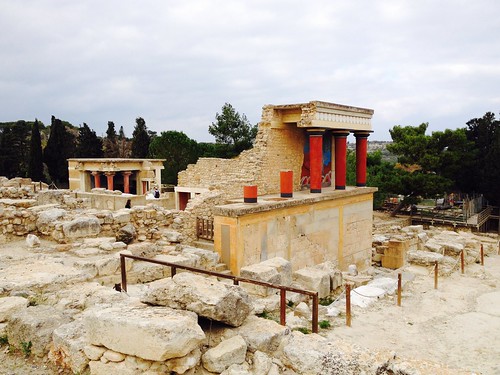It is old news that the ancient Greeks and Romans colored their artworks and architecture with bright lively colors but so against the concrete shades we cherish. I first found out about this at a restoration of the Palace of Minos at Knossos, Crete by the famed archaeologist Sir Arthur Evans, accomplished largely in the very late nineteenth century--including bright red columns! Bright colors abound in frescoes from the ancient world--also nothing new and something the public is used to.
The Metropolitan Museum of Art is showcasing this spectrum in its exhibition "Chroma: Ancient Sculpture in Color," now through March 26 of next year, having restored colors in reproductions of objects in their amazing collection. The basis is, of course, small remnants of color found in the works--they've always been there.
The title of this WaPo article refers to "bad taste"? Who is to say?
PS: See these relevant articles too on the colors of antiquity:
https://www.architecturaldigest.com/story/at-this-roman-villa-travelers-can-party-like-its-351-ad?utm_source=nl&utm_brand=ad&utm_mailing=ARD_Daily_AM_081822&utm_campaign=aud-dev&utm_medium=email&bxid=5ccc976f24c17c766a65293f&cndid=27873963&hasha=0f93d6ed14481bd58307b09821169256&hashb=3370f898b5974ef146e858e2f01a727af40963f7&hashc=314ead5a35faab907652d59905aeeb92f7a6395b03191e332996618385a7c745&esrc=AUTO_PRINT&utm_term=ARD_Daily
and https://www.nytimes.com/2022/08/17/arts/design/reproductions-museums-sculpture-met-brinkmann-antiquity-polychromy.html?campaign_id=2&emc=edit_th_20220817&instance_id=69598&nl=todaysheadlines®i_id=62576591&segment_id=101693&user_id=0f93d6ed14481bd58307b09821169256






